
When Satoshi Nakamoto invented the bitcoin, he put together two terms that had fitted together much earlier in the history of money. The two-word term “bit coin” was used to describe parts of coins such as Spanish reales. After 1598, the Spanish Empire minted uniform coins that had a value of eight reales. These were known as pieces of eight or variously known as pesos or Spanish dollars.
Spanish reales were so uniform in size and value that they were widely used in a number of colonies (not just Spanish ones). It was the default currency in the United States when the country was born; the American paper currency had lost much of its value with the Revolutionary War, so Spanish-American reales filled that gap. At times, there were smaller denominations of coins also, but often the 8 reales were the only ones available. It was not until 1897 that they were discontinued.
Just about every pirate movie ever made has included some reference to "Pieces of Eight."

From Pirates of the Caribbean: At World's End, Walt Disney Pictures (2007).
Hacking Real Coins
What if someone needed a smaller unit? They hacked the coin in half, and then half again, and then half once more. An 8 real coin divided nicely into 8 smaller pieces, each one worth 1 real (or 1/8 of the original coin’s value). These also became known as “bits” because each one represented a bit of the coin. “Two bits” meant 1/4 of a coin or two reales. The slang term “two bit” came to mean something of cheap quality, such as “two bit suit” or “two bit hustler.”

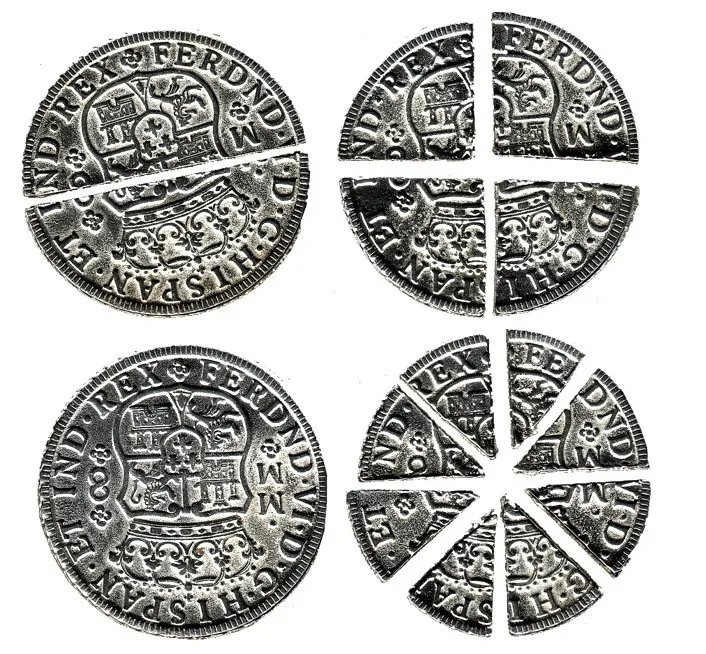
Adapted from a college by doomsteaddiner.net.
If you’ve ever heard the term “hacksilver”, bits were a similar concept. In the past, when people wanted to divide a larger piece of silver bullion or old jewelry, they would hack or cut it into pieces. Each piece’s value would depend upon its weight. The word “Peso” comes from the Spanish word for weight, and pesos were the Spanish successor currency to reales that resulted in the peso term being used for monetary currency in many Spanish colonies. Today, the term peso is used in Argentina, Chile, Colombia, Cuba, the Dominican Republic, Mexico, the Philippines, and Uruguay, while an additional 13 former Spanish colonies also once used pesos. Mexico re-introduced reales for a period of time in the 19th Century when its silver pesos were not doing as well.
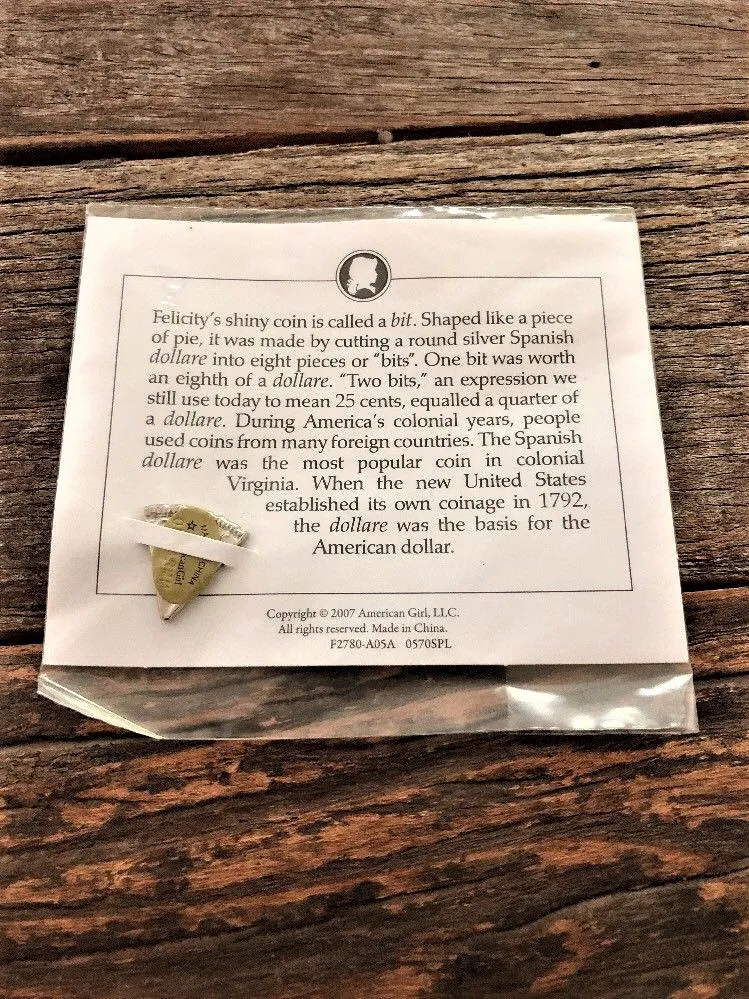
Even American Girl dolls have their own bits. Image from ebay.com.
Thalers
During the reign of reales, thalers were another silver trade coin that were widely used in Europe, Africa, the Middle East, and beyond. They began when silver from the mines in the Joachimsthal region of Bavaria (now in the Czech Republic) was stamped. They were called thalers for their place of origin. Later, thalers were stamped with Maria Teresa’s image in Vienna. A Dutch version has a lion stamp, like the original Bohemian coins, and was called a leeuwandaalder (lion thaler).
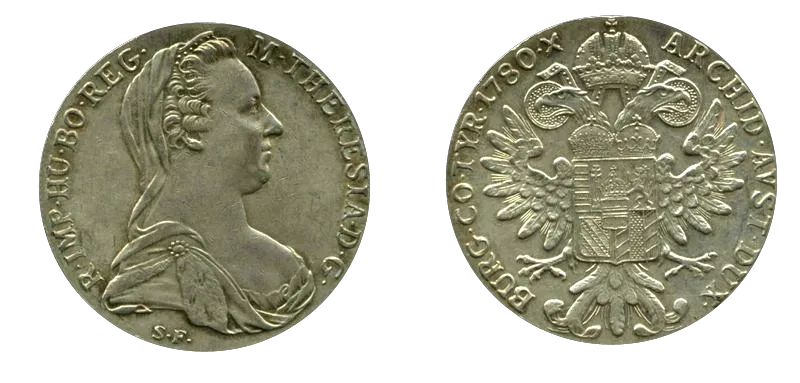
Maria Theresa thalers were widely circulated for at least 400 years as a default currency in much of Europe and other major parts of the world. While there is no circulated currency with that name today, there are 23 currencies all over the world called “dollars”, which took their name from the thaler. From Hong Kong to Australia to the United States, the thalers are still being honored today. Also, in 2017, the government of Belarus created a cryptocurrency known as the thaler.
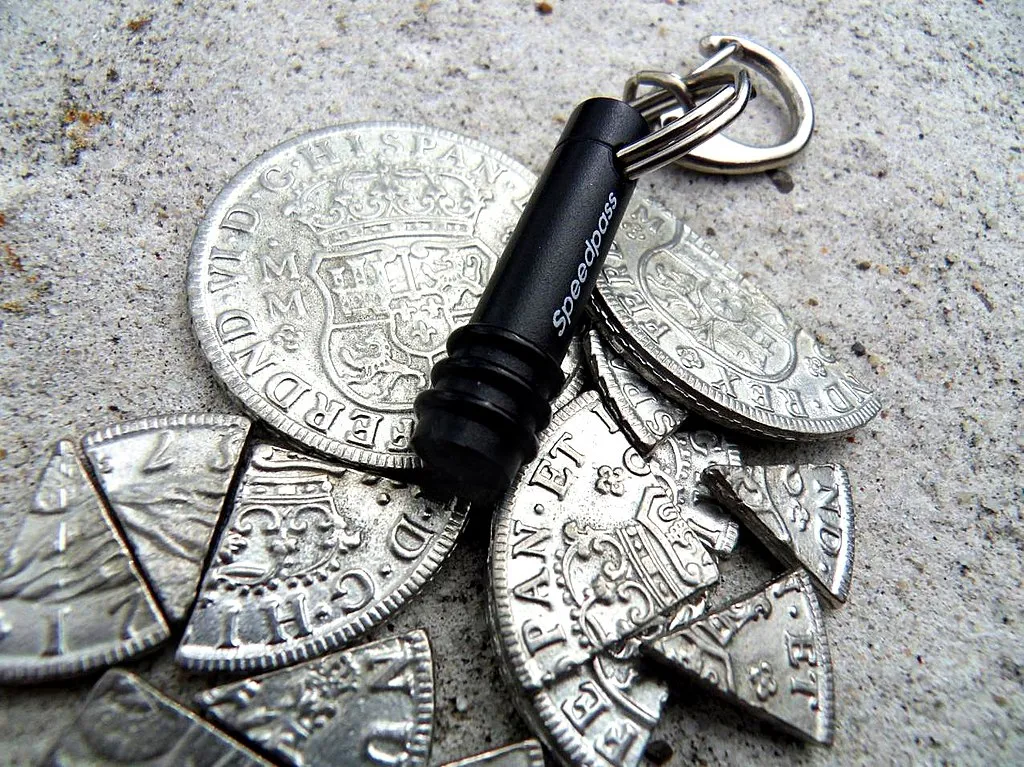
From Bits to the Decimal System
When modern currencies such as the U.S. dollar were created, they used the decimal system for fractional divisions of the monetary unit. For example, one dollar can be divided ten times into 10-cent coins known as dimes. And each dime can be divided into ten pennies, which are worth one cent apiece. However, there is one vestige of the bit that remained from the days when reales were the de facto American currency. 12.5 cents was an awkward amount, but the popular “two bits” denomination became the quarter dollar, which is worth 25 cents.
Reales and bits remained legal currency in the United States until 1857, but even after that the influence of bits lived on. When the author Robert Louis Stevenson traveled through the American frontier in 1892, he noted that people kept using them long after there was any coin for the bit:
In the Pacific States they…settle their affairs by a coin that no longer exists – the BIT, or old Mexican real. The supposed value of the bit is twelve and a half cents, eight to the dollar. When it comes to two bits, the quarter-dollar stands for the required amount. But how about an odd bit? The nearest coin to it is a dime, which is, short by a fifth. That, then, is called a SHORT bit. If you have one, you lay it triumphantly down, and save two and a half cents. But if you have not, and lay down a quarter, the bar-keeper or shopman calmly tenders you a dime by way of change; and thus you have paid what is called a LONG BIT, and lost two and a half cents, or even, by comparison with a short bit, five cents.
--Robert Louis Stevenson, Across the Plains (1892)

1905 Physical Bit Coins
In 1916, the United States purchased the Virgin Islands in the Danish West Indies from Denmark for a sum of $25 million, which was paid in gold. In 1934, the U.S. Virgin Islands switched to the U.S. dollar. But beginning in 1904 and for 30 years thereafter, these islands used a currency known as the daler. Its fractional denominations were called francs (5 francs to a daler), cents (100 cents to a daler), and the bit (5 bits to a cent; 500 bits to a daler).
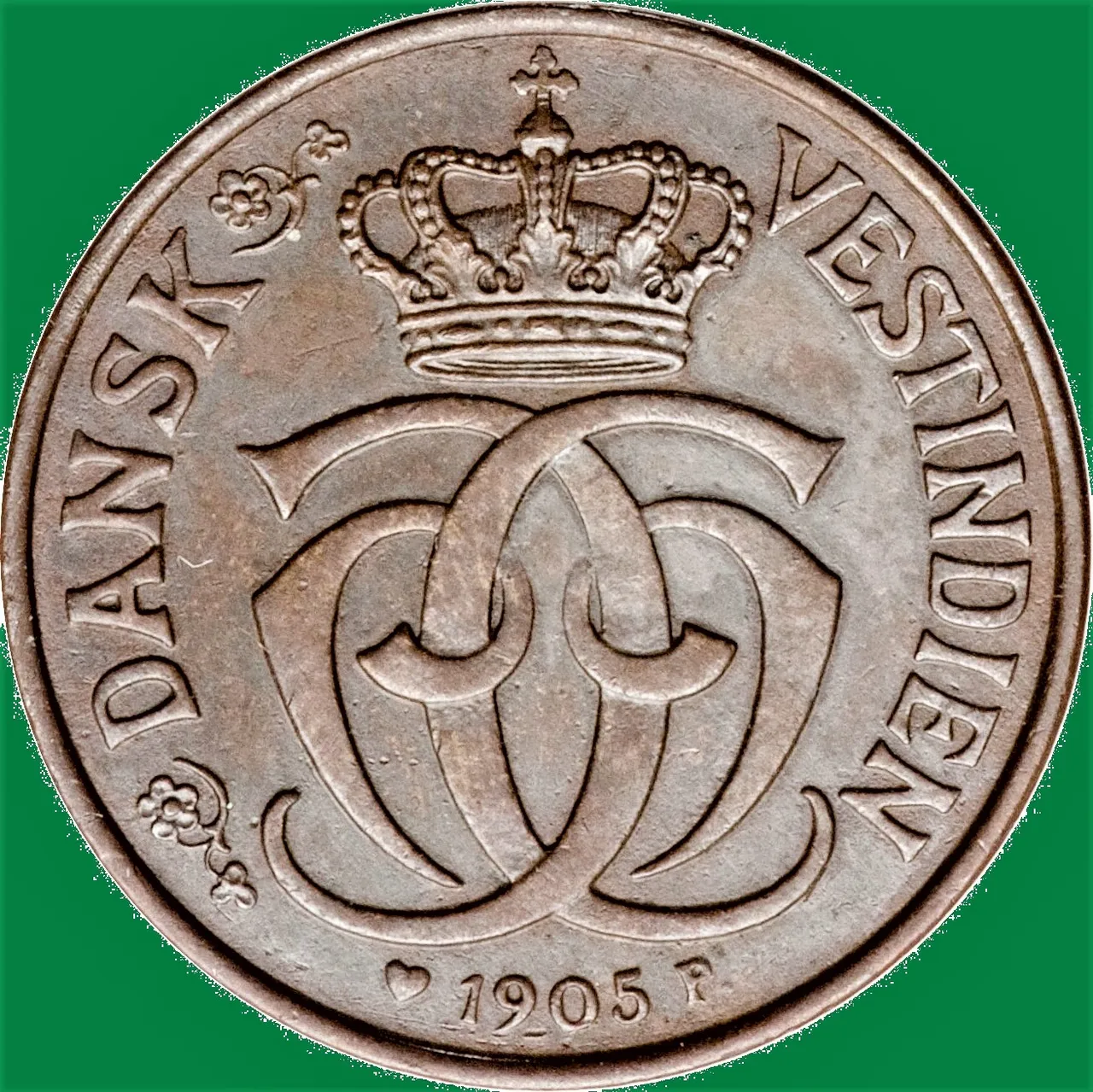
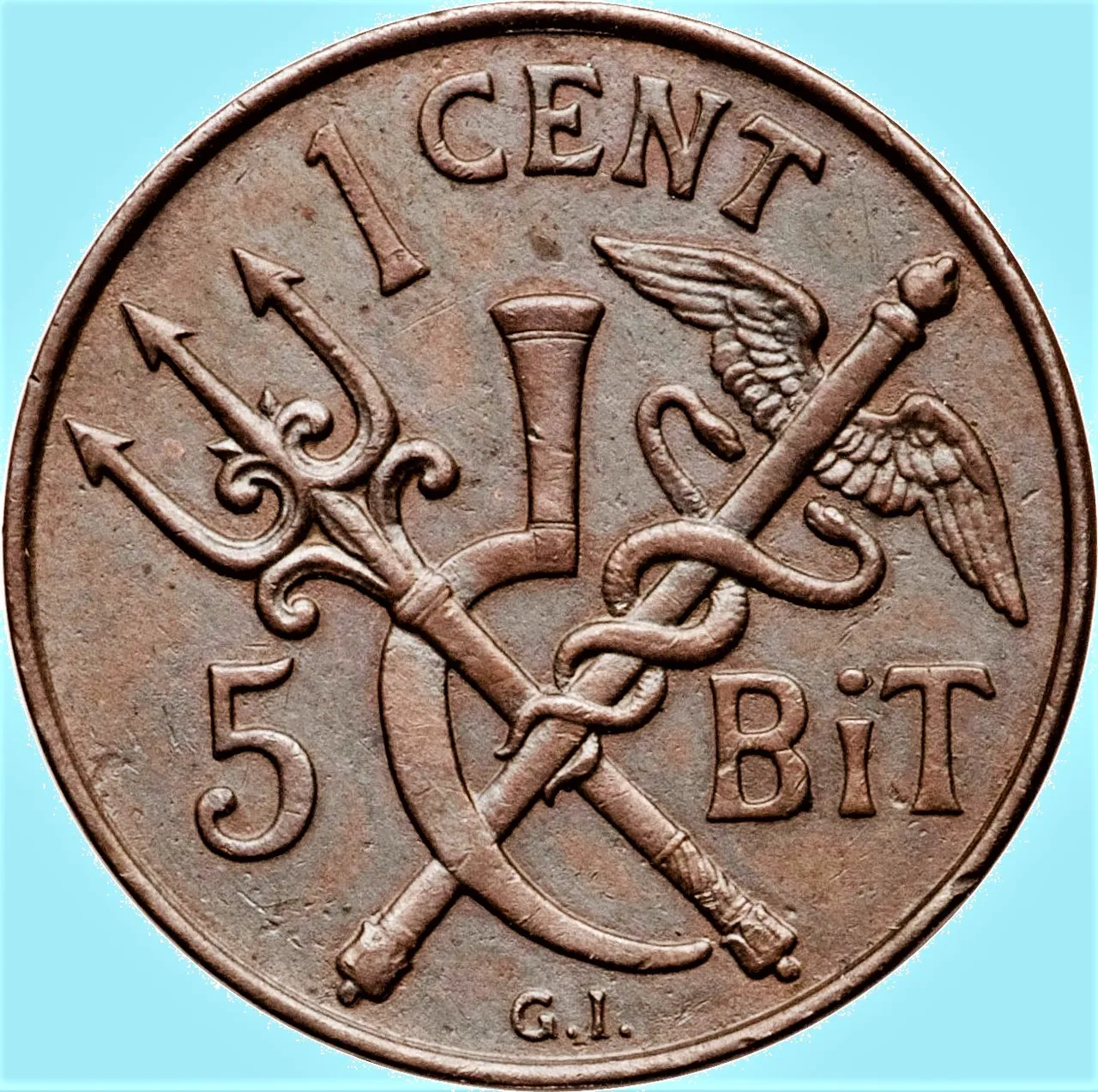
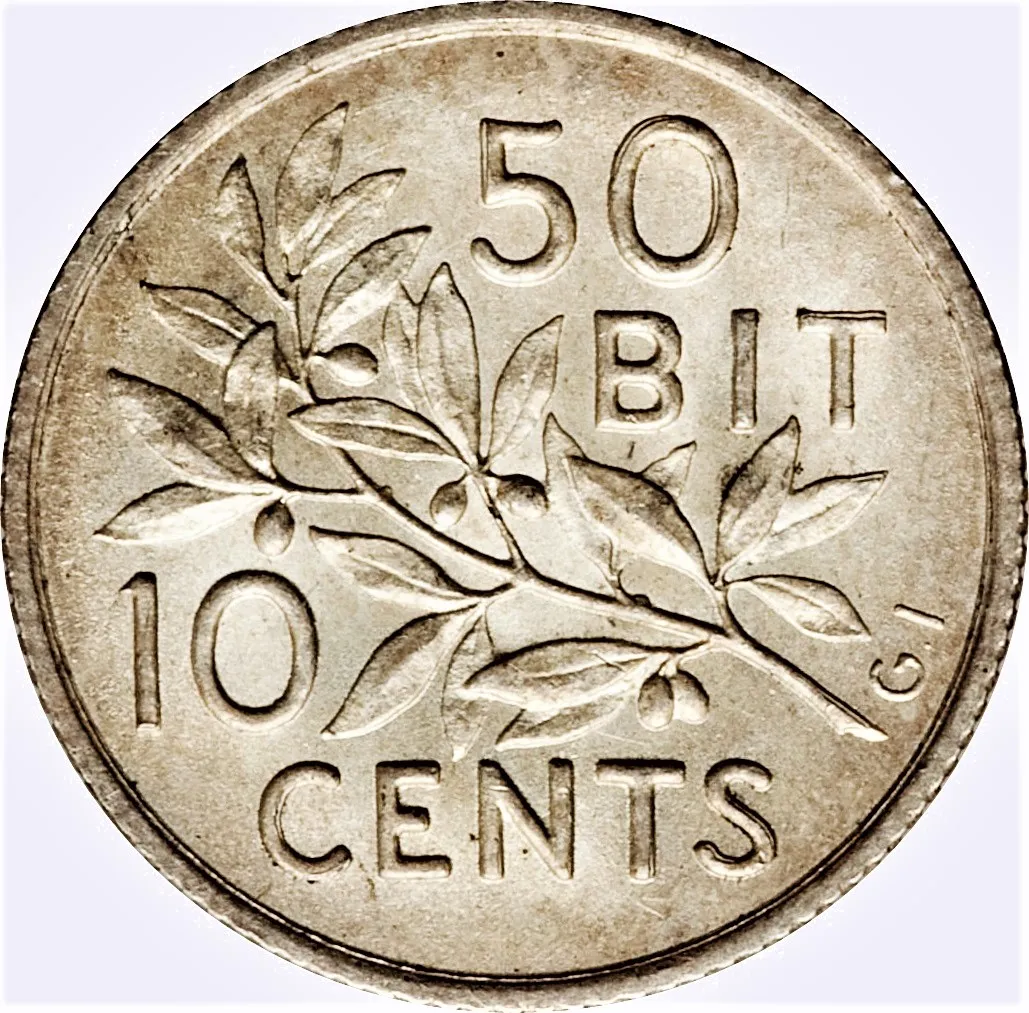
Real 'bit coins' from 1905.
In 1905, the Danish West Indies minted coins that were denominated in both cents and bits. Ladies and gentlemen, here is the BIT COIN. These old coins existed on earth for just over 100 years before Satoshi Nakamoto published his first paper on bitcoin. And in creating that term, he probably was thinking mostly of “bit” as a unit of information, as it has been used frequently in the information age. Perhaps he also was aware of the bit’s past history as a monetary unit.

So if you’d like to own some bit coins (two words), you can purchase the 1905 Danish West Indies versions at online auctions for much less than a bitcoin. And then, the next time a member of your family asks you, “Hey, are you still doing that bit coin thing?” You can grin and pull out a 1905 physical bit coin. “Look Grandma, I have one right here! From 1905, back when Theodore Roosevelt was in the White House and the Trans-Siberian Railway first opened. Who needs that Inter Net thing, anyway?”
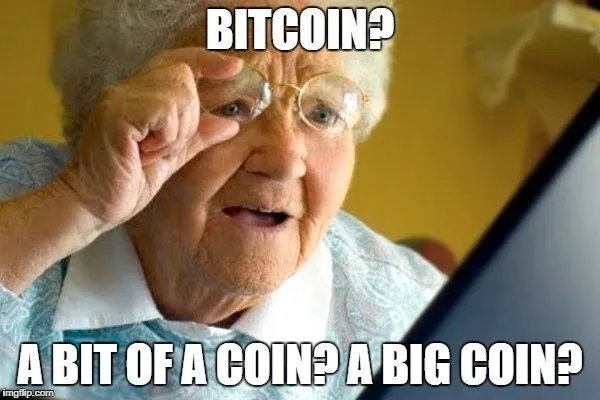
References:
https://coinweek.com/world-coins/history-of-coins-two-bits-four-bits-six-bits-eight/
https://en.wikipedia.org/wiki/Peso#Countries_that_use_pesos
https://en.wikipedia.org/wiki/Thaler
https://coinweek.com/featured-news/maria-teresa-taler-coin-centuries-part-ii/
https://en.wikipedia.org/wiki/Bit_(money)
Danish West Indies coin images courtesy of heritageauctions.com. Other images credited in the text or believed to belong to the public domain. Top image includes a public domain image and other images that are credited separately within the text.